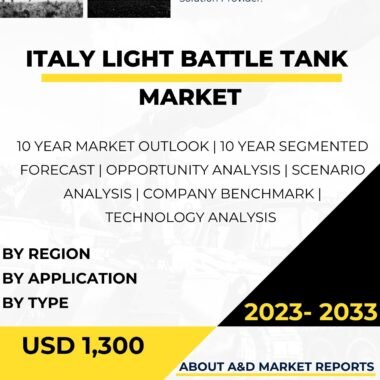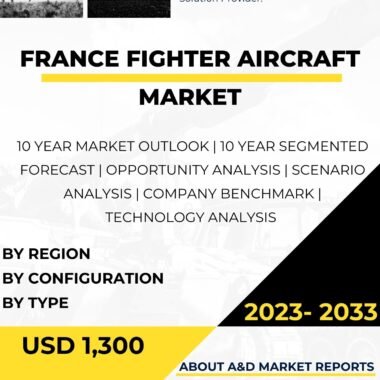Description
The combat drone market in Malaysia has become a significant aspect of the country’s defense modernization and capability enhancement efforts. As a nation with strategic importance in Southeast Asia, Malaysia recognizes the potential of combat drones to bolster its defense capabilities, enhance situational awareness, and respond effectively to various security challenges.
Combat drones, also known as Unmanned Aerial Vehicles (UAVs) or Unmanned Aerial Systems (UAS), are remotely piloted or autonomous aircraft equipped with sensors, cameras, and weaponry. These drones offer a wide range of military applications, including intelligence, surveillance, reconnaissance, and precision strikes on enemy targets.
The combat drone market in Malaysia has seen considerable growth in recent years, driven by advancements in drone technology, increased operational versatility, and reduced costs. Combat drones offer unique advantages, such as reduced risk to personnel, extended flight durations, and the ability to access difficult or hazardous environments.
One of the primary objectives of Malaysia’s combat drone market is to enhance situational awareness and intelligence capabilities. Combat drones equipped with sensors and surveillance systems provide real-time information about enemy positions, troop movements, terrain conditions, and other relevant battlefield parameters. This shared awareness enables military commanders to make informed decisions, allocate resources efficiently, and respond promptly to changes in the operational environment.
The acquisition and integration of combat drones are part of Malaysia’s broader defense modernization efforts. The government’s focus on enhancing aerial capabilities includes the procurement of advanced drones equipped with state-of-the-art sensors and communication systems. Collaborations with international defense companies and technology providers have facilitated access to cutting-edge drone technologies and expertise.
Moreover, Malaysia has also demonstrated interest in developing indigenous combat drone capabilities. Collaborations between local defense companies and foreign manufacturers have facilitated technology transfer and knowledge exchange, fostering the growth of the domestic defense industry. Indigenous development allows Malaysia to customize combat drones to meet its specific operational needs and contribute to the growth of the local defense industry.
In addition to their role in intelligence, surveillance, and reconnaissance (ISR) operations, combat drones also play a significant role in precision strikes and targeted operations. Armed drones can carry precision-guided munitions and conduct strikes on enemy targets with great accuracy, reducing collateral damage and minimizing risks to friendly forces.
The combat drone market in Malaysia also extends beyond military applications to include civil and humanitarian uses. Drones have been employed in disaster management, search and rescue operations, environmental monitoring, and other civil applications. Their ability to access remote or inaccessible areas makes them valuable assets in supporting various civilian initiatives.
Training and education are critical aspects of the combat drone market in Malaysia. Proper training of drone operators ensures that they are proficient in flying drones, interpreting sensor data, and conducting missions effectively. Regular training exercises contribute to enhancing the effectiveness of drone operations and response capabilities.
Challenges in the Malaysian combat drone market include airspace integration and regulatory considerations. The increasing use of combat drones necessitates careful planning to ensure their safe integration into civilian airspace and compliance with aviation regulations. Malaysia is actively working on developing guidelines and regulations to govern the use of drones in its airspace.
Budgetary considerations also play a crucial role in the combat drone market. The acquisition and maintenance of advanced combat drones can be costly, requiring careful planning and prioritization of defense expenditure.
Moreover, combat drones require secure communication networks to ensure reliable and encrypted data transmission between operators and drones. Robust cybersecurity measures are essential to protect drone operations from potential cyber threats and unauthorized access.
Environmental factors, such as adverse weather conditions, can pose challenges to drone operations. Proper maintenance and operational planning are necessary to ensure the reliability and performance of combat drones under various environmental conditions.
The combat drone market in Malaysia is also influenced by international norms and agreements related to drone technology and usage. Malaysia adheres to international regulations and guidelines, ensuring responsible use and deployment of combat drones in accordance with international norms.
In conclusion, the combat drone market in Malaysia plays a significant role in the country’s defense strategy and capability enhancement efforts. The adoption of advanced combat drone technologies enhances situational awareness, intelligence capabilities, and response effectiveness. Collaborations with international partners and indigenous research and development efforts contribute to Malaysia’s strategic capabilities and the growth of the domestic defense industry. The government’s commitment to aerial capabilities and the development of indigenous drone technologies demonstrates Malaysia’s dedication to strengthening its defense capabilities and addressing various security challenges. Additionally, the versatility of combat drones extends beyond military applications to support civil and humanitarian initiatives, contributing to national security, disaster management, and environmental monitoring efforts.




